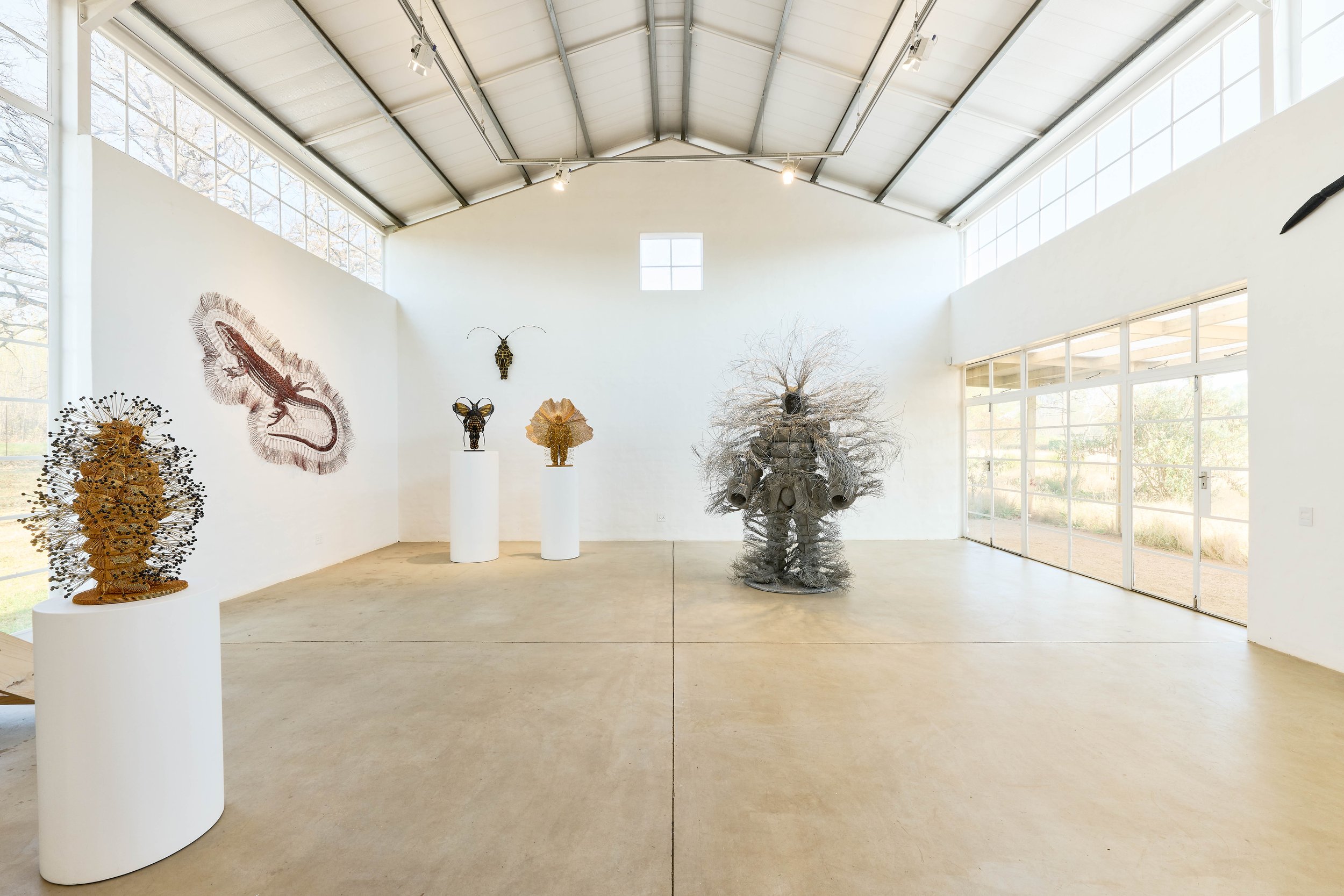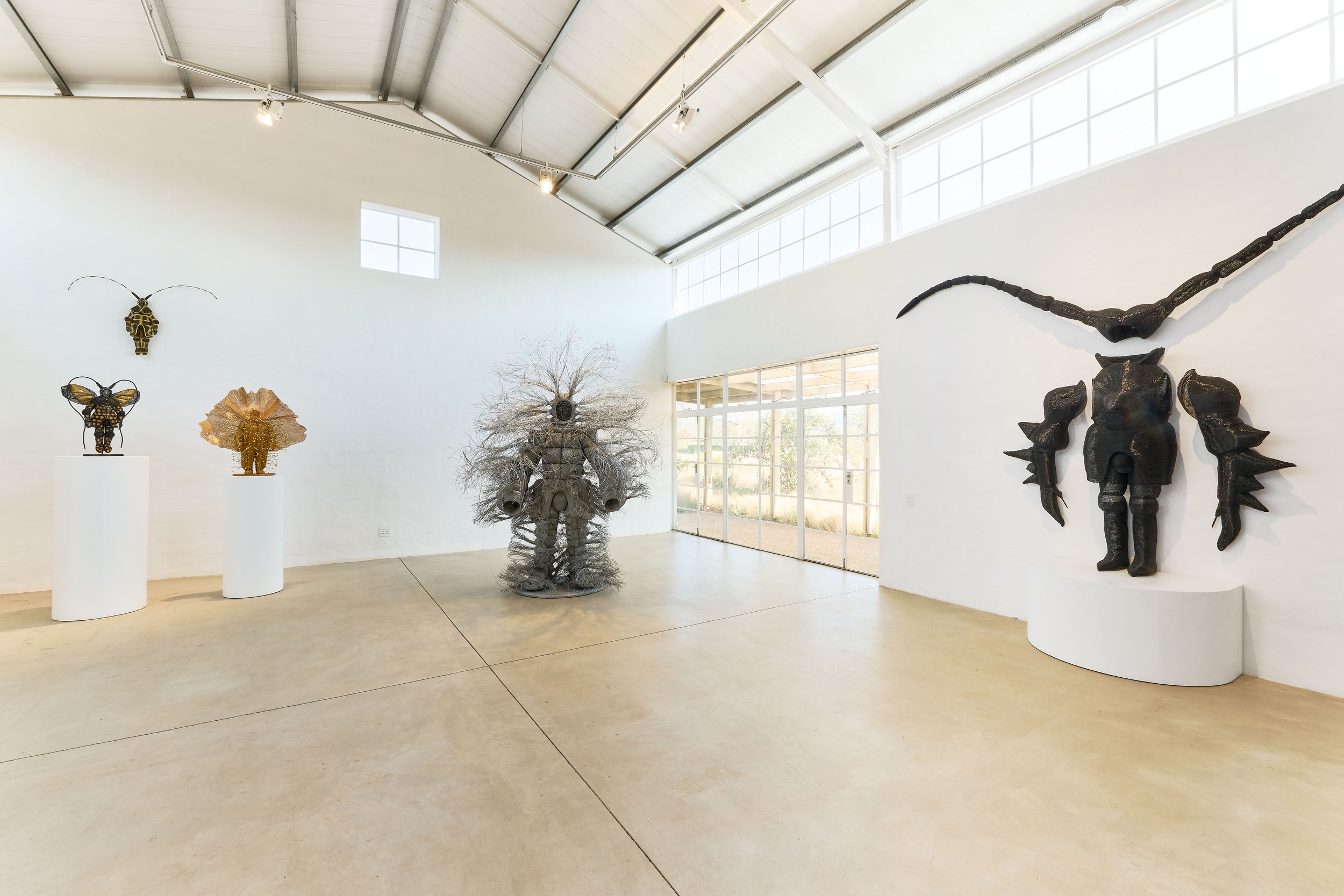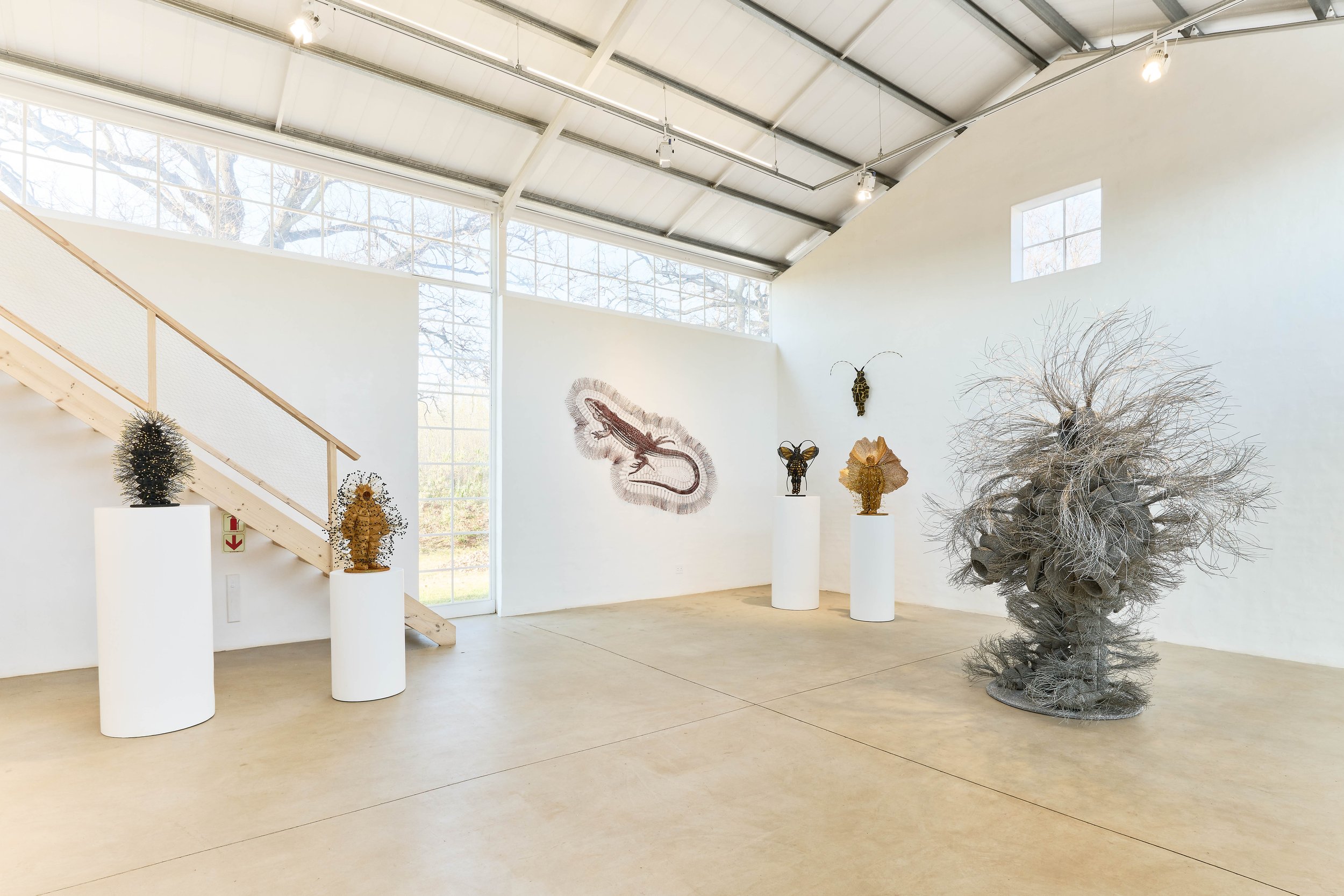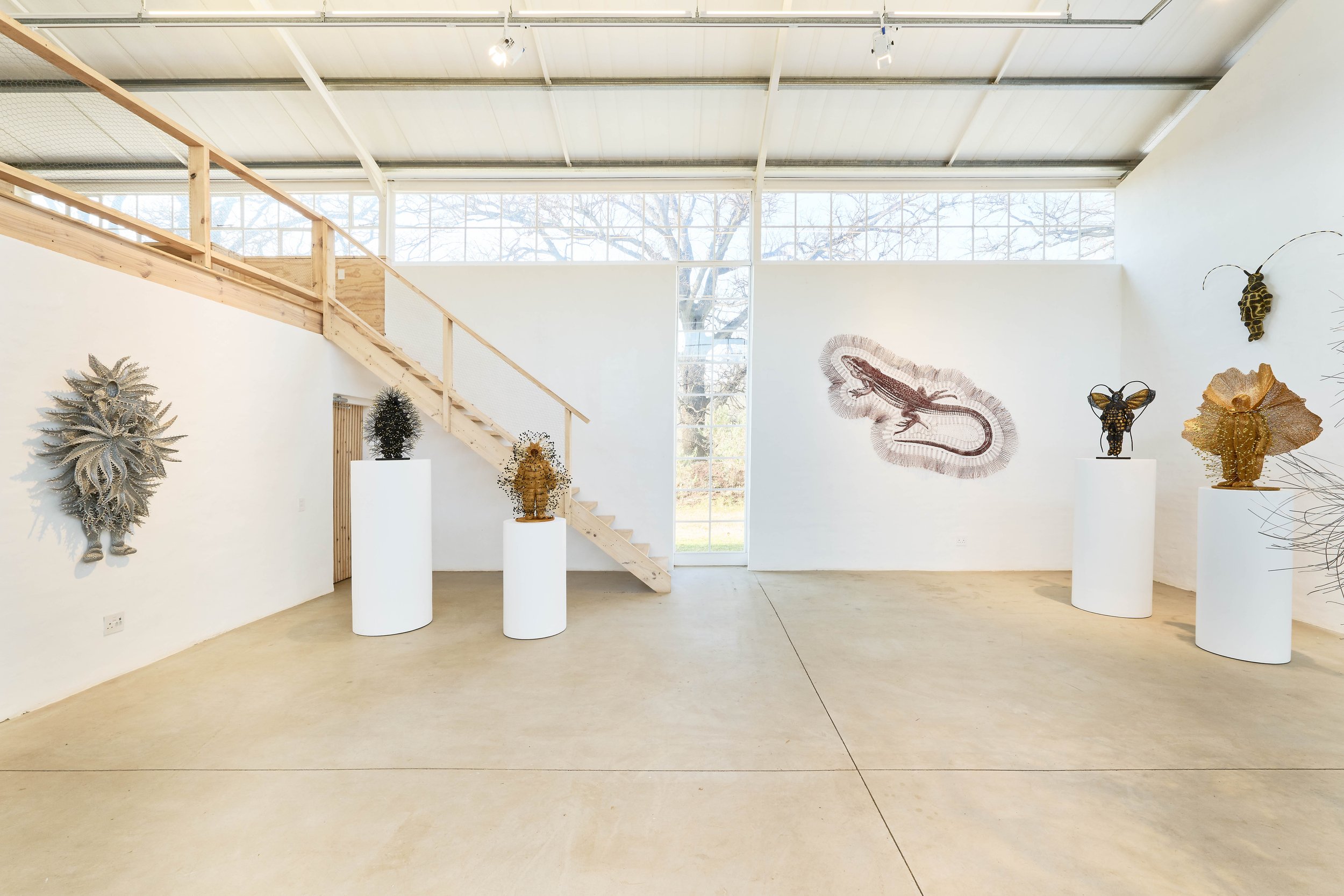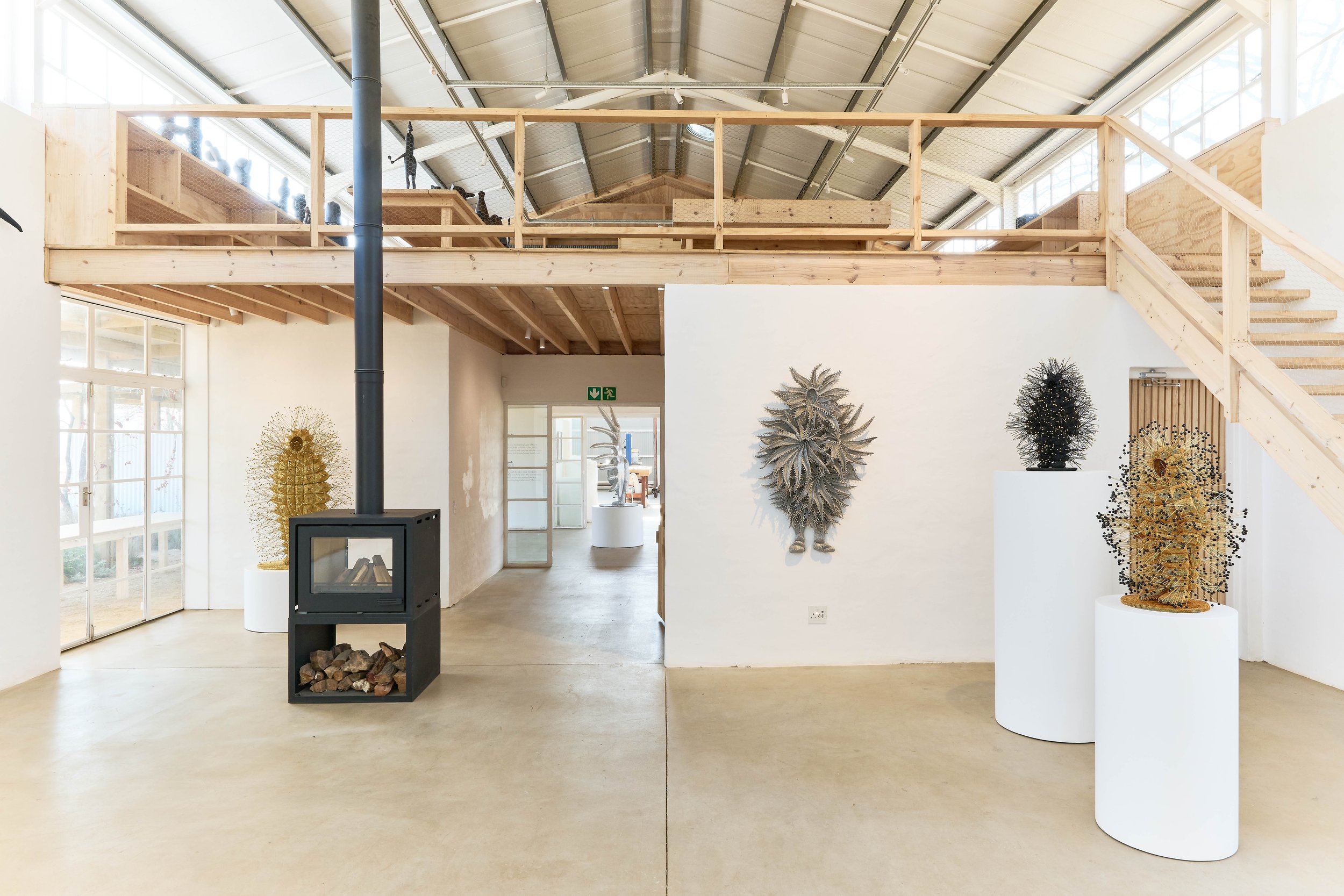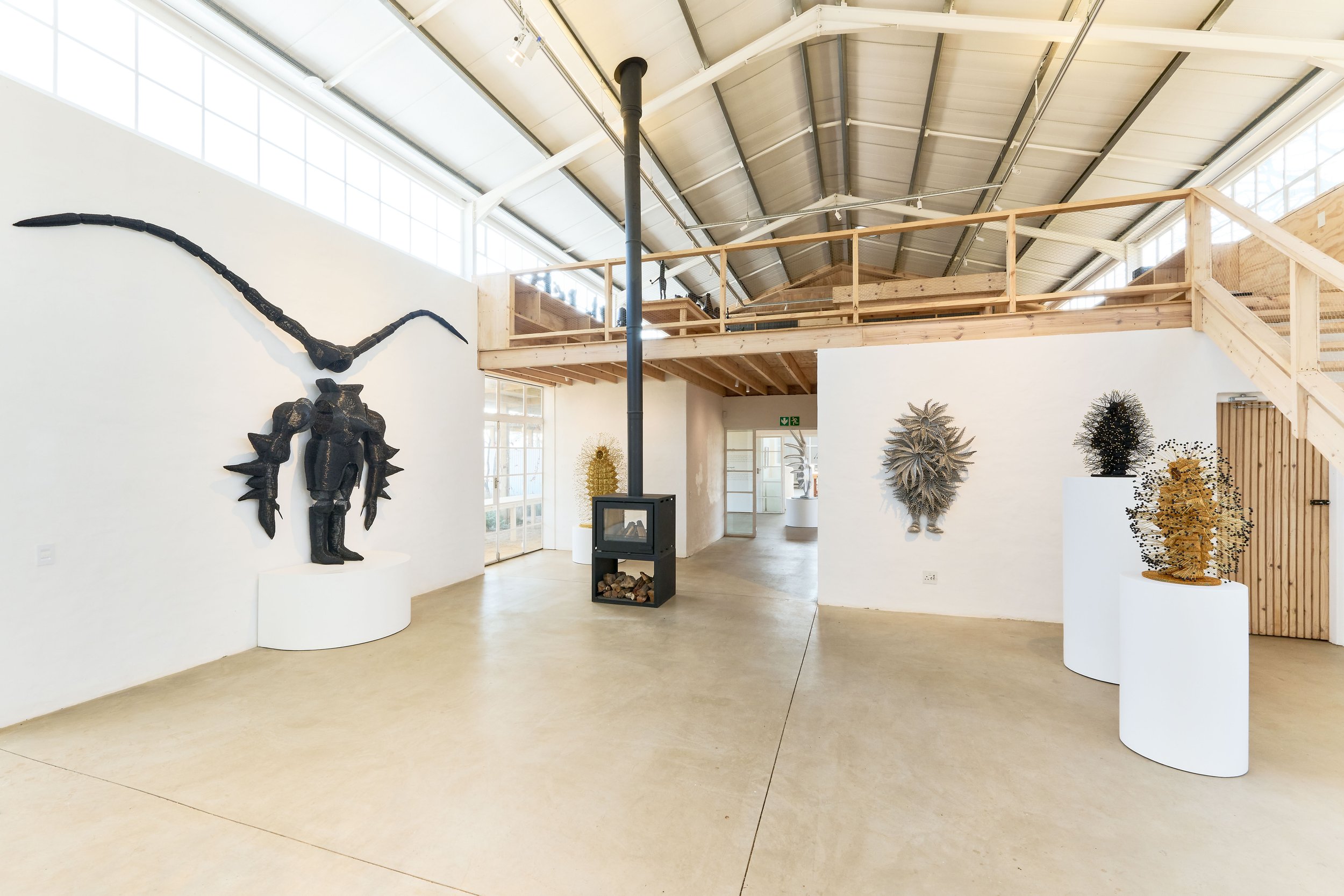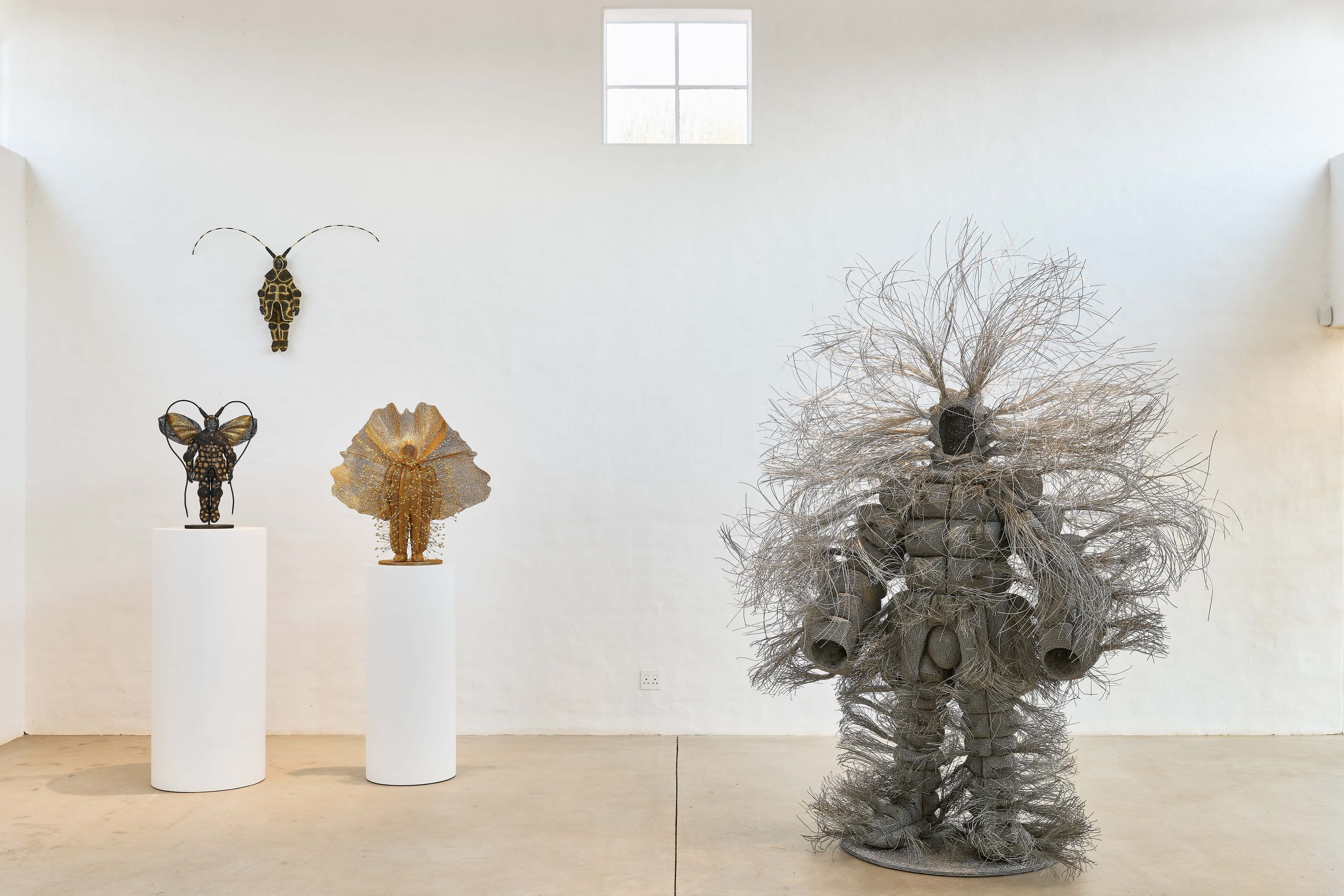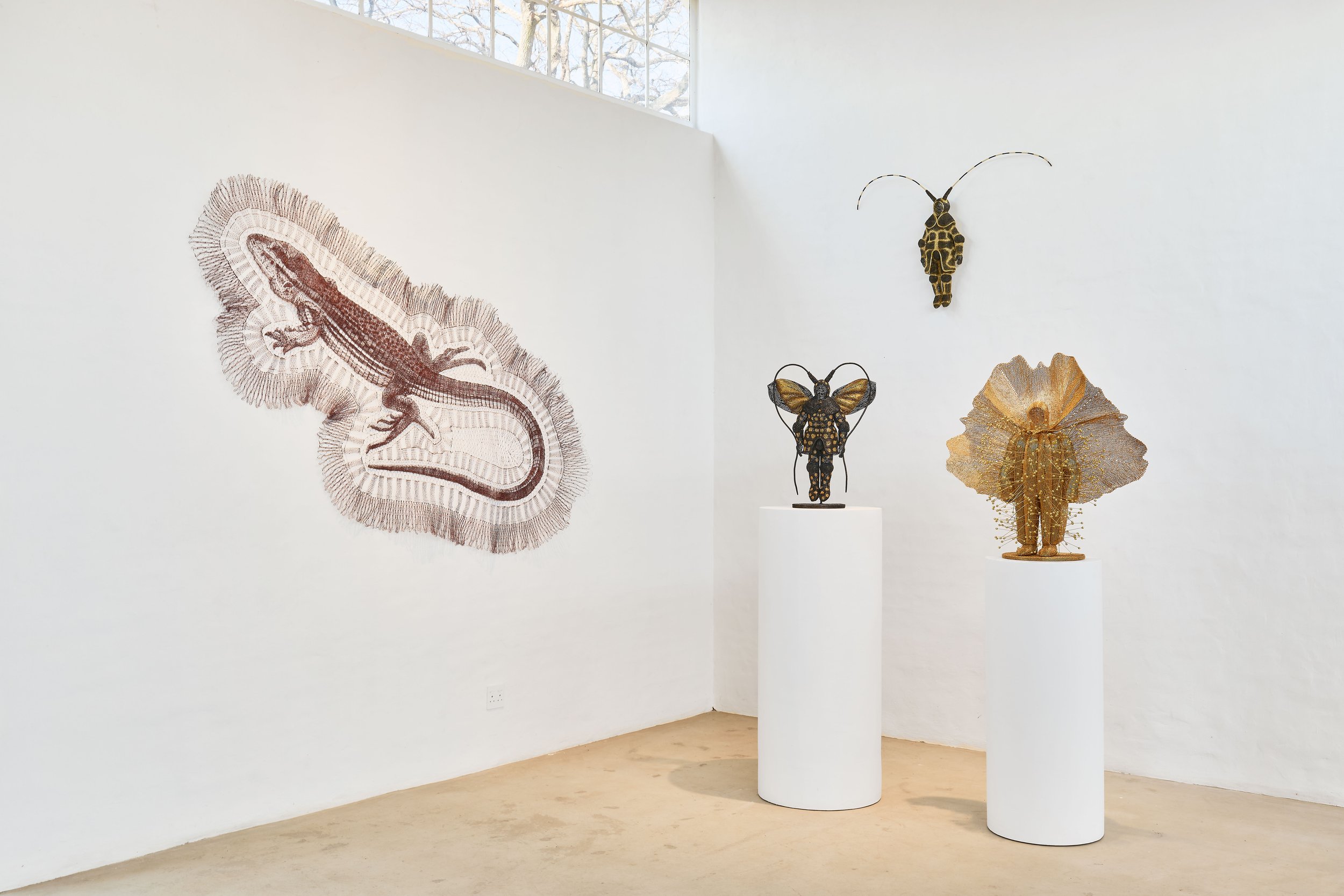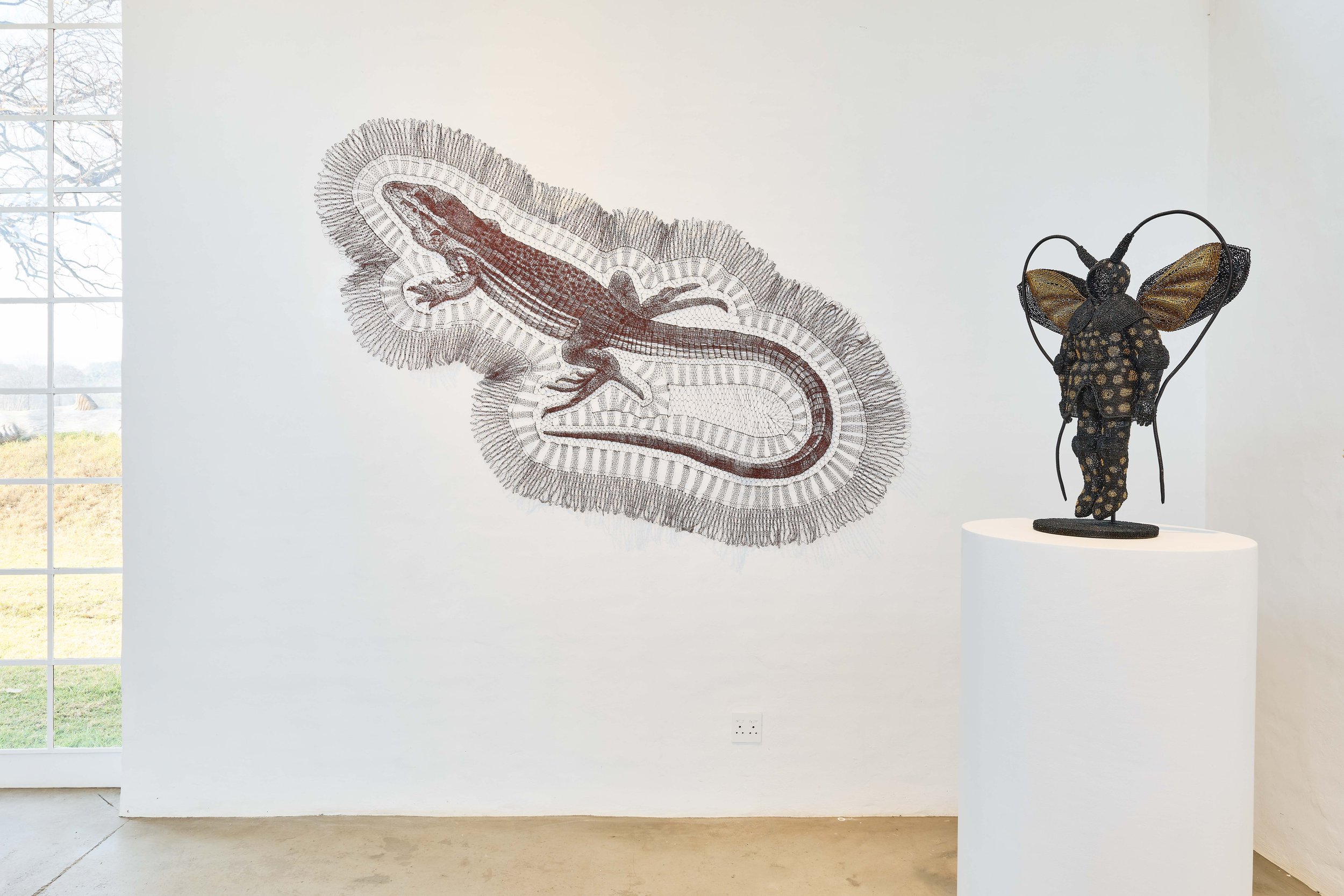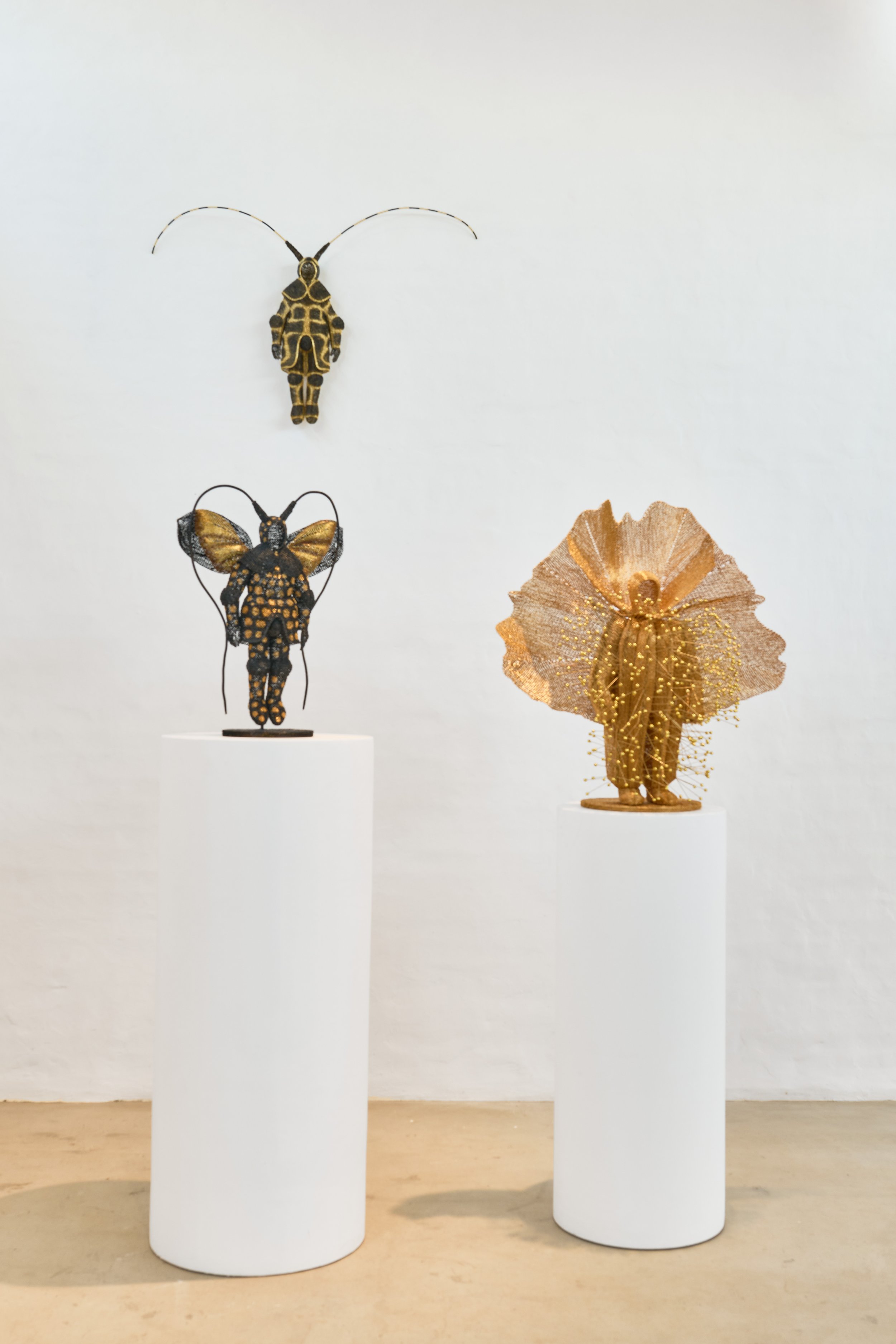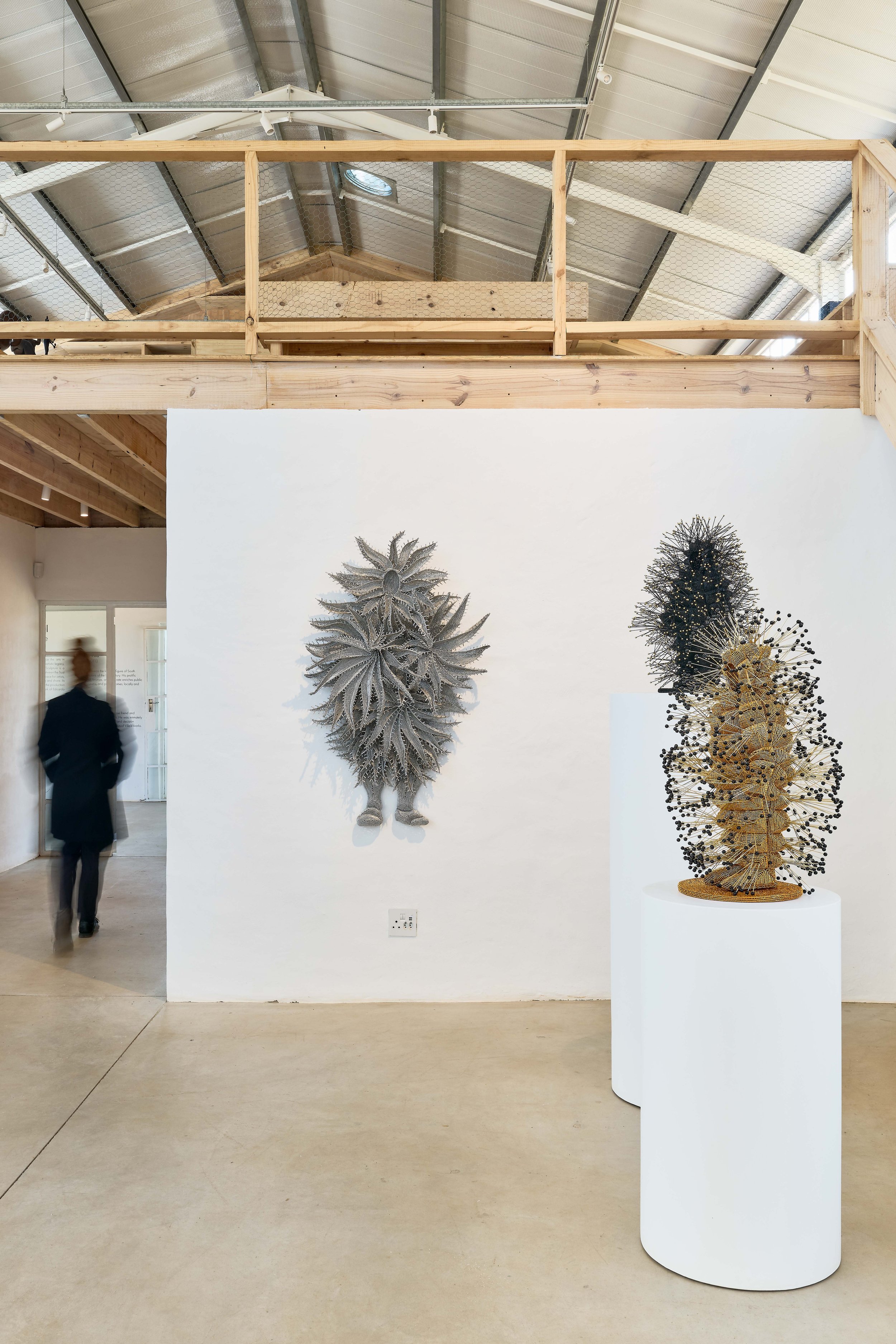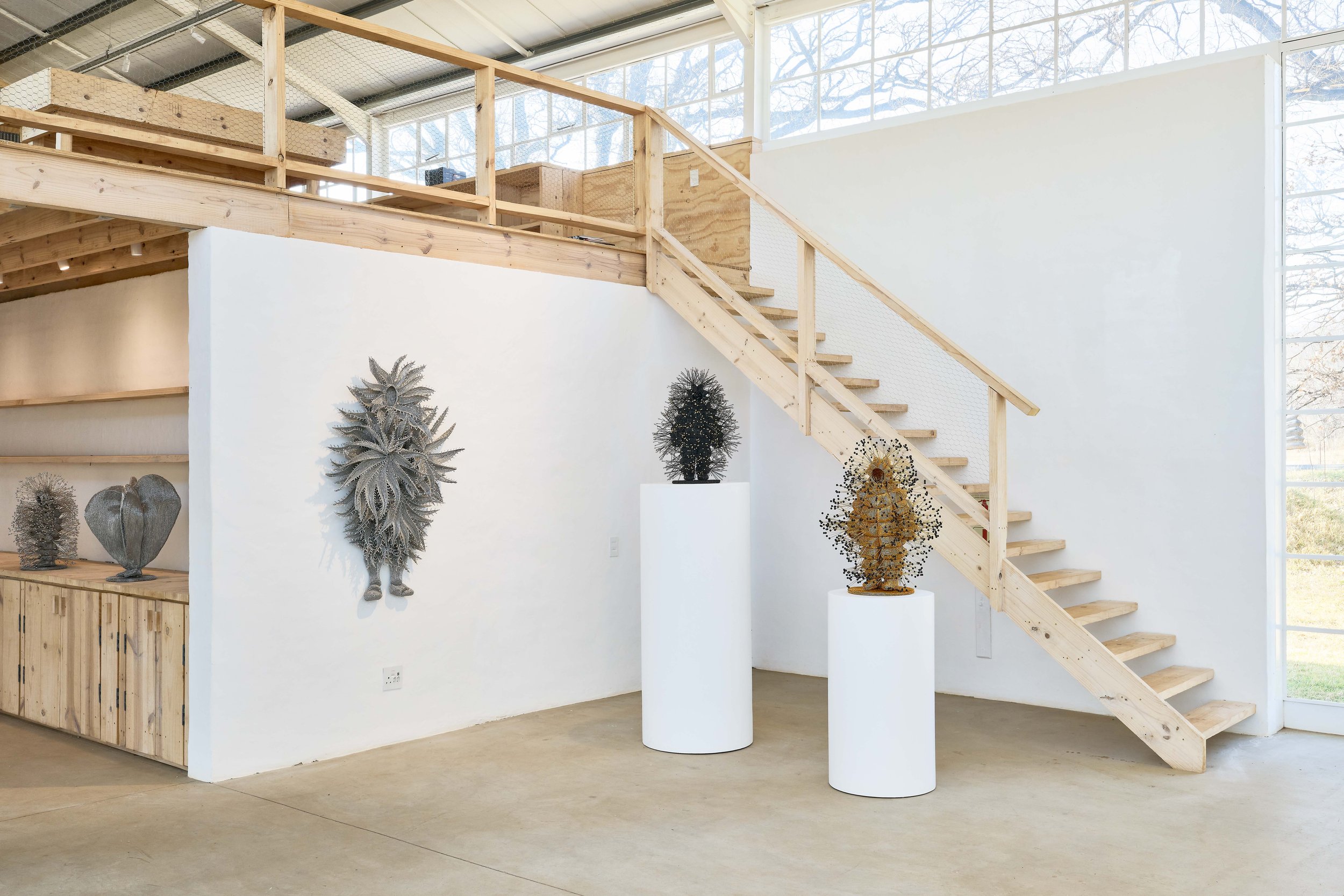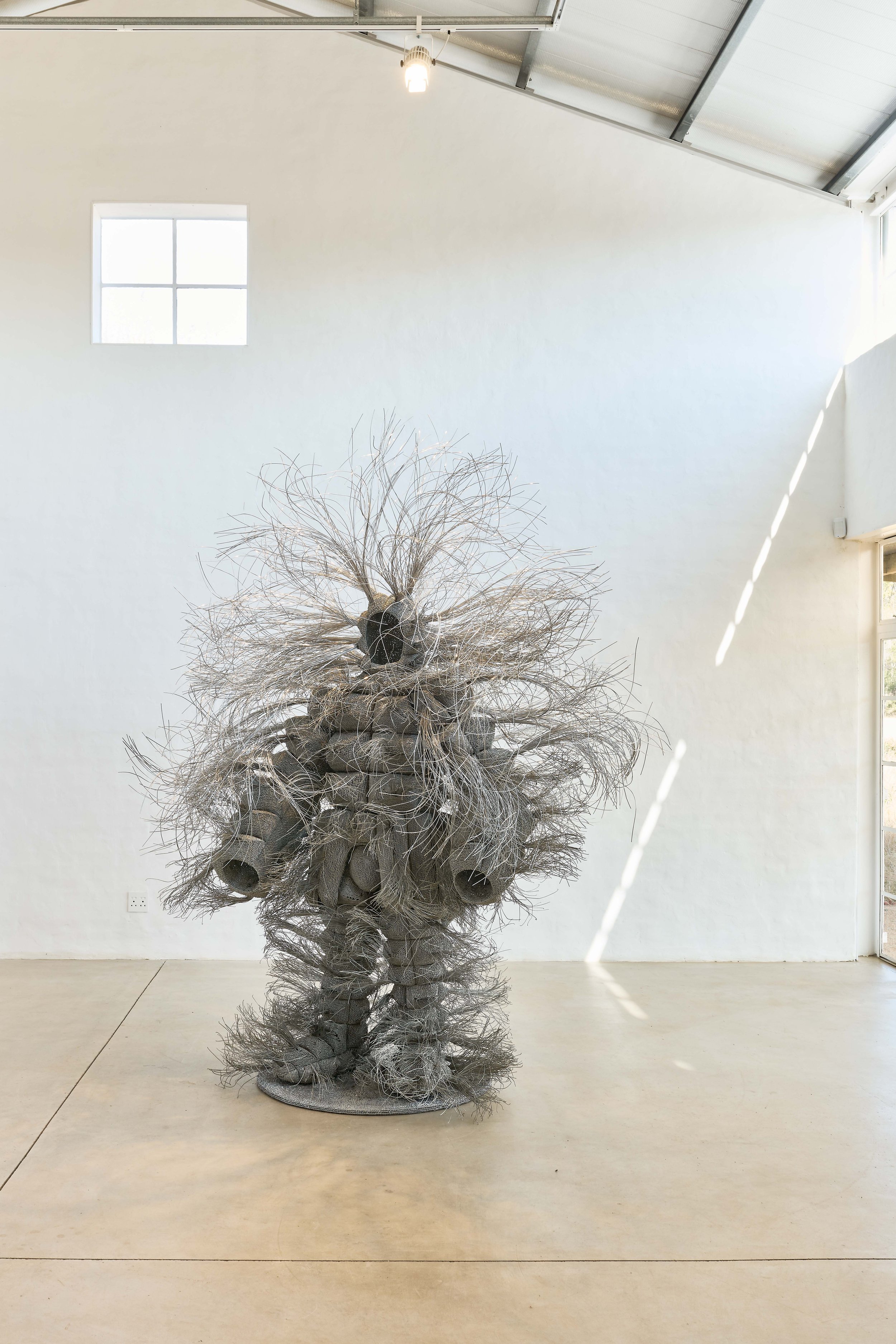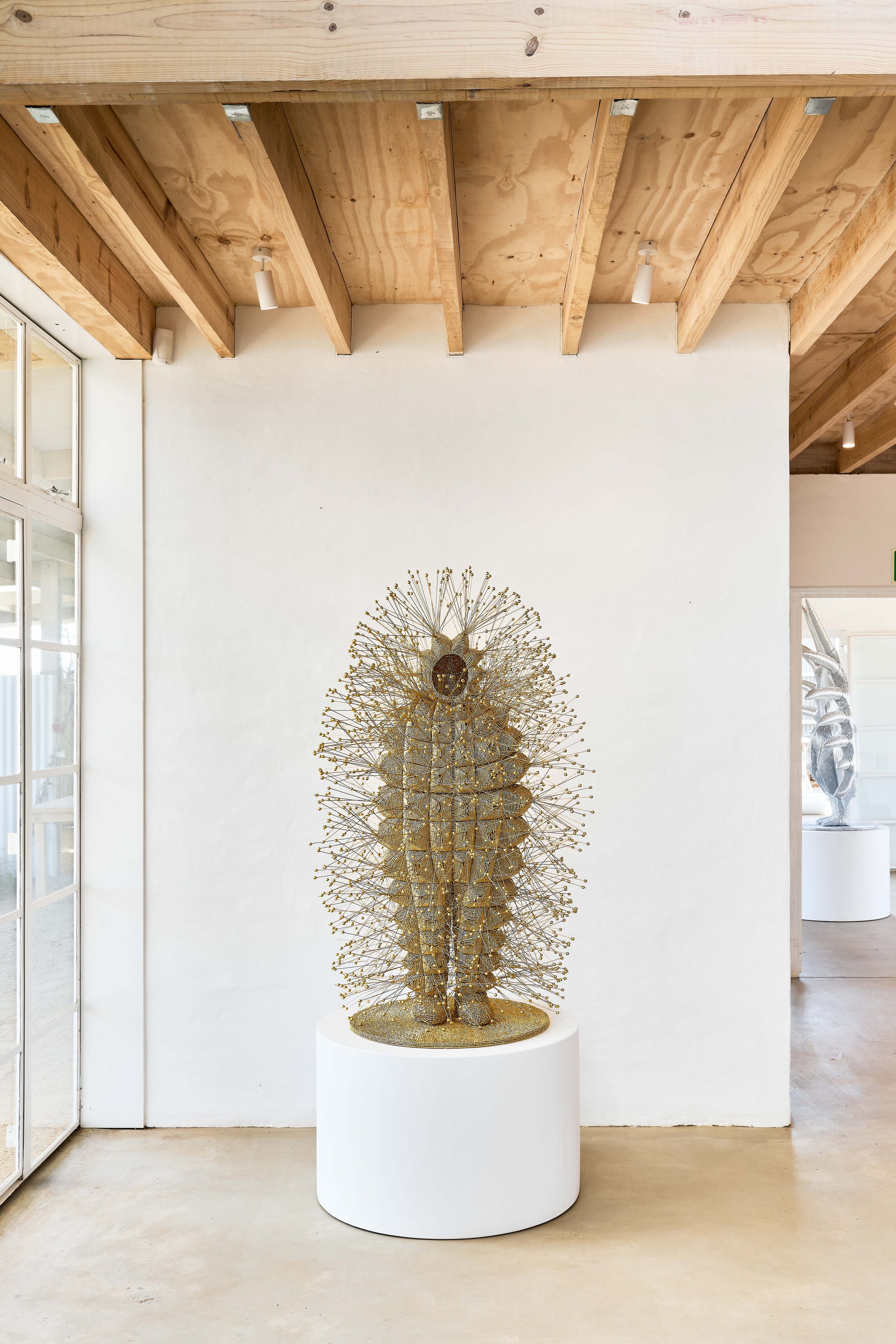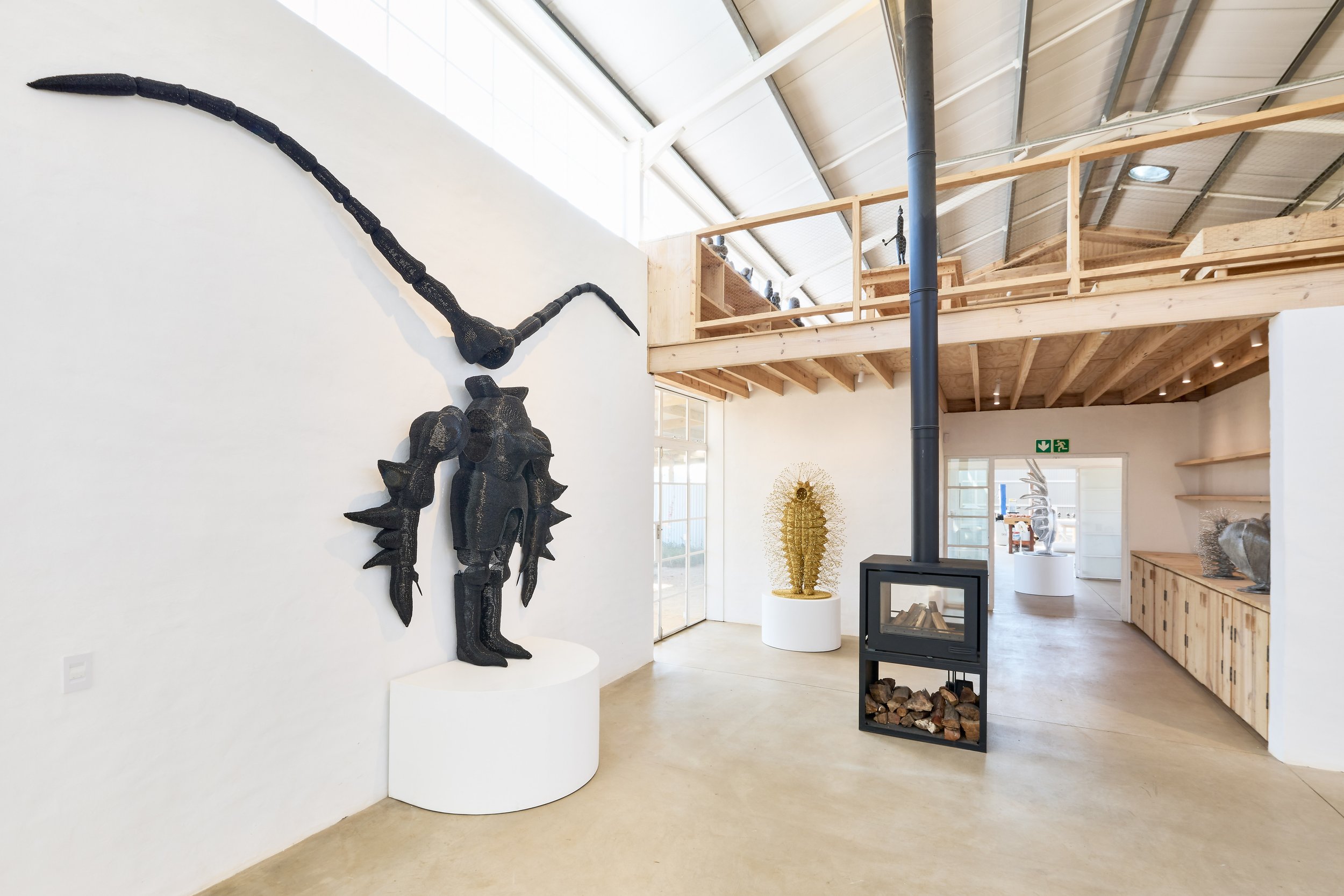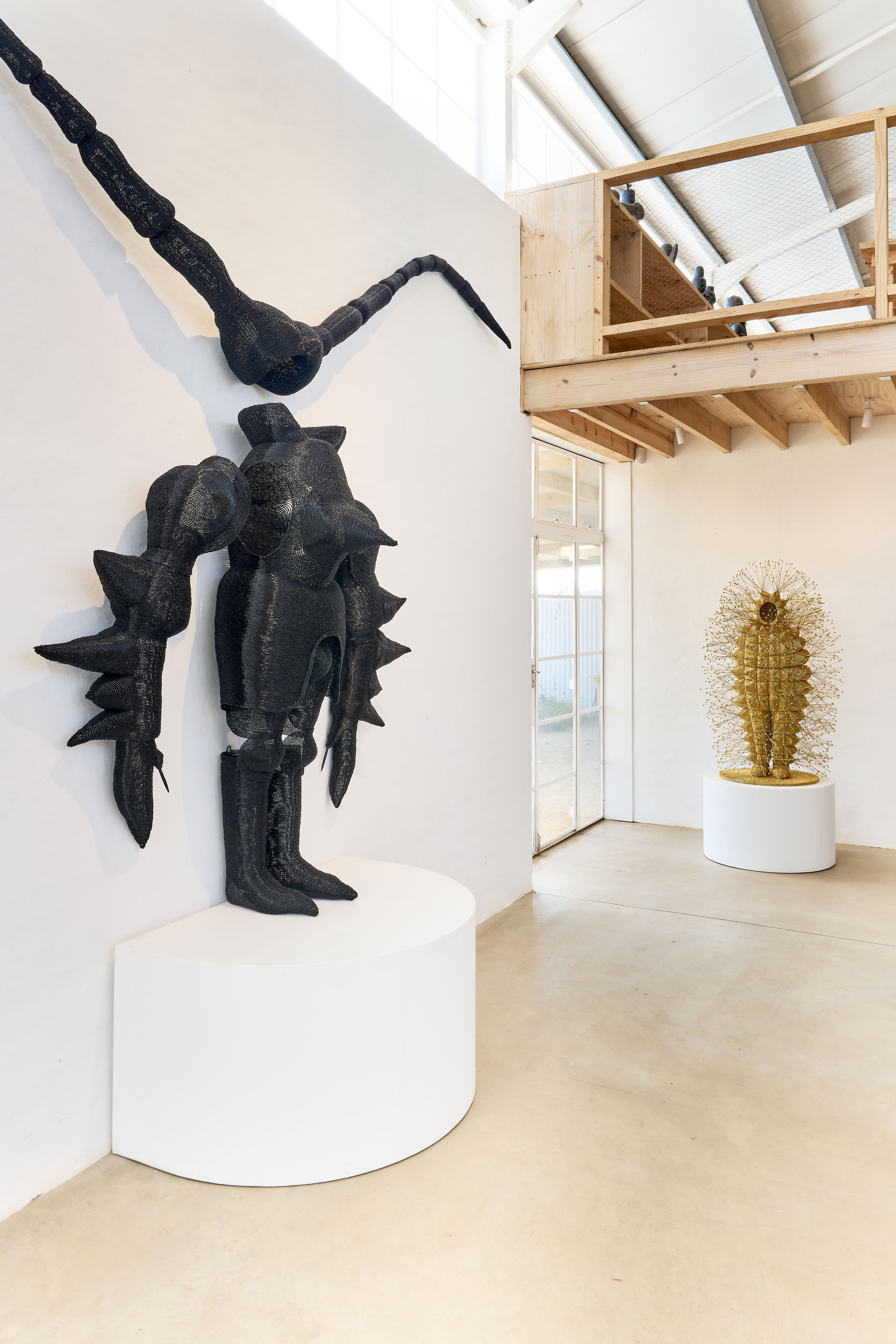Walter Oltmann: In Time
In 2022, Walter Oltmann was awarded the Edoardo Villa Extraordinary Award for Sculpture, which empowers the continuing practice of the recipient by providing space and resources to research, produce, and exhibit new works. Oltmann’s award also makes possible the production of a publication, for which he engaged in a series of conversations with different artists who work in a similar way, to varying ends. These conversations – with Usha Seejarim, Chris Soal, and Inga Somdyala – led to an exhibition, A Quiet Focus (2022–3), aimed at demonstrating the ideas expressed and exploring the dialogue between each artist and the materials they use, in particular their slow, repetitive process and the haptic nature of their work. The exhibition invited audiences to handle and experiment with these materials, to gain a deeper understanding of their methodology, the labour involved, and the limitations and possibilities afforded by each material.
Walter Oltmann: In Time can be viewed as an extension of this project. Most of the artworks shown were produced over the last year as a result of the award. His interest in ‘manual work and its philosophy’ is echoed in the labour-intensive nature of his work. In each, process does not disappear when the work is made, but is embedded as an integral part of the whole. As notes Elizabeth Burroughs in her essay for the book, our world has become wholly mechanised, to the point where nobody considers ‘the time, materials, machinery, the mental and physical effort that go into the manufacture of the cloth for a T-shirt and its subsequent fabrication, or into the balletic production of a BMW by a swarm of robots. We purchase the end product without any sense of what it took to create it.’
While Oltmann’s works may ‘appear poised and effortless,’ they also make ‘evident the labour involved,’ echoing Hannah Arendt’s view of labour as an ‘activity’ that corresponds to the biological processes of ‘growth, metabolism, and eventual decay.’ Thus, one labours to put food on the table or to give birth, following ‘the circular movement of our bodily functions.’ Oltmann’s references to processes of metamorphosis, transformation, death and rebirth similarly underscore the cyclical processes of life in its varied forms, yet his use of repetitive hand-based craft also feeds into this loop, making labour an active ingredient of the whole.

